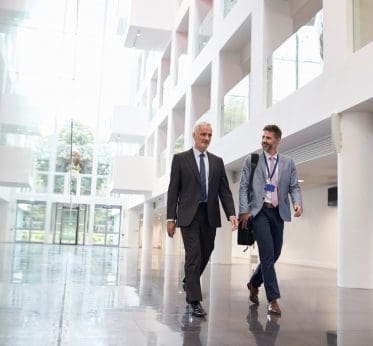Originally published by CIO
As companies bear down on customer experience as a key differentiator, they are carving out a new CxO role. Are CIOs a natural fit for the new post? The answer is, it depends.
John Morhous came up through the ranks on the traditional technology track. After graduating Rensselaer Polytechnic Institute with B.S. in information technology, he served in a number of tech-related roles, including director of IT engineering and eventually CIO. In his latest gig, Morhous puts a whole new spin on the trajectory for top IT execs: He’s now the first chief experience officer (CxO) at Flight Centre Travel Group (FCTG) where he has soup-to-nuts responsibility for delivering customer-facing products and services for the travel agency group’s corporate brands.
Outside of his technology chops, Morhous credits his commercial orientation, ability to comfortably immerse with customers, and serve as a translator of sorts between IT, business, and clients as the springboard for landing the new position.
“Our customers don’t need technology solutions, they need products and services,” says Morhous, who stepped into the newly-created role a year and a half ago after spending more than a decade in IT at FCTG. “Today, it’s less about the guts of how technology operates and more about what business capabilities your customers and company need. Some CIOs can make the transition well to focus on experience while others will struggle.”
CxO is the latest in a slew of new C-suite titles that include chief data officer, chief digital officer, chief transformation officer, among many others. CxO has been elevated to the leadership table because of the growing emphasis on customer experience as a competitive differentiator. A Walker study found that by the end of 2020, customer experience will overtake price and product as the key brand differentiator, while Gartner calls customer experience the new battlefield with 80 percent of companies expecting to compete mostly or completely on the basis of customer experience by 2020. In a PwC report on the subject, 73 percent of people pointed to customer experience as a key factor in their purchasing decisions, and one in three consumers (32%) said they’d walk away from a much loved brand after just one bad experience.
“Customer experience is increasingly critical because people are voting with their wallets, their clicks, and are going to decide if their experience with one pharmacy or store is better or less annoying than the competition and that’s true across industries,” says Marc Yves Touitou, owner and managing director of 2e2 Digital Transformations Consulting and a CIO for the past 25 years. “Digital transformation that supports the client experience is at the core of business success.”
The CxO role
Given its high profile, more companies are appointing a C-level position to oversee customer experience, but the question remains, who is a natural fit for the job? Some, like Morhous, see the role as tailor-made for business-savvy CIOs who have an aptitude for listening to customers and translating their needs into technology-driven solutions. Others contend that despite the CIO’s bird’s-eye view of the organization, the traditional CIO mindset and make-up isn’t the best match for the role compared to skill sets of other potential candidates, including the chief marketing officer.
To be effective, CxOs must work across disciplines and have a keen understanding of the buyer’s journey and customer lifecycle. They also need to be intimately familiar with the ins and outs of the business and how it makes money, which goes well beyond having insights into how to improve and evolve business processes. Some CxOs have design sensibilities, but all must be fully comfortable engaging with customers, using that lens to put customer needs and desires above everything else, experts say.
Michael Braun, CxO at Echidna, a digital agency specializing in helping B2B and B2C companies build ecommerce systems, says there’s a delta between the traditional CIO background and what’s required for a strong CxO. Braun, whose tech background is keyed to usability and design, including a stint at Best Buy building customer-facing mobile apps and kiosk experiences, says CxOs require a specific set of competencies that includes design sensibilities, the ability to clearly articulate innovation, and possess empathy and a capacity for listening to customers. Most significantly, Braun believes the CxO should serve as a catalyst to bring awareness of customer experience to enterprise interactions.
“The CIO has an understanding of technology and what can be done, the CMO understands the desires of customers and the need for engagement, and the CxO is the bridge between the two,” he says.
CIOs are also grounded in a different organizational structure than most CxOs, which can make the transition more difficult, according to David Clarke, global CxO, experience consulting and products strategy as well as go-to-market leader for PwC. CIOs typically have command of a robust vertical structure with manpower and budgets while the CxO will usually work horizontally across the organization and look at customer experience from both a digital and physical perspective, he says.
“It’s a different ecosystem that they’re operating under, and CxOs are completely co-dependent on the CIO,” Clarke says. “The CxO role is to connect the various business entities through a brand vision, drive consistency across any human engagement, and manage the customer journey.”
While the CxO post may not be for every CIO, it’s clear that in organizations that have both roles, there needs to be strong alignment between the two executives. In fact, a broad partnership between the CIO, CMO, and CxO is a linchpin in delivering a customer experience that satisfies customers while steering a company to meet its core business goals.
“The competition between titles is silly — you have to find a way to get it done jointly through collaboration,” says 2e2’s Touitou. “If you want to deliver a successful experience and don’t have the CIO as part of the plan, you’re going to suffer. The CIO has the knowledge of the process and implementation and innovation while you also need people with an understanding of the clients, which is typically the CMO.”
Transitioning from CIO to CxO
Kevin Pawsey, global CxO at Global Knowledge, is one of those tech leaders who believes the sharpened focus on customer experience is a natural progression of the CIO role, especially as part of an organization’s digital transformation journey.
As Global Knowledge, a provider of professional IT training content, began building out its digital platform, Pawsey, then CIO, had oversight of traditional technology decisions such as cloud migration, data warehouse implementation, and building out the data center. Yet his charter quickly expanded into areas such as analyzing why customers were buying what they were buying or understanding behavior so the firm could wield technology such as experience management platforms to improve engagement and increase a customer’s lifetime value.
“The CEO got excited about experience management, and we did research around the CxO role to see if we needed one and what skill sets it would require,” Pawsey recalls. Given that Pawsey’s CIO role was already defined by experience management and data analytics, he said the decision was made to migrate the CIO role into a CxO.
“I see it as a natural extension to what I do as a CIO any way,” says Pawsey, who got the official CxO title in September 2018. He retains oversight of the traditional IT organization, but now has a dedicated customer experience team along with oversight of the customer support organization, including the customer help desk.
Since stepping into the CxO role, FCTG’s Morhous has given up direct responsibility for his core IT team along with the marketing and content group he oversaw. In exchange, he’s now taking a direct role working much more closely with customers and business leaders to enlist their feedback and direction for designing the next set of FCTG products and services. Instead of directing cloud migrations or defining an enterprise software roadmap, Morhous spends time developing personas and helping identify potential acquisition targets. There are countless hours devoted to customer visits and speaking engagements at industry forums — all activities that many modern-day CIOs have embraced over the years as their profile rises with digital transformation.
Yet while many CIOs can check off the CxO skills box, it’s not a universal fit and is in fact out of the comfort zone for many. “It’s less about the skills and more about the individual,” he explains. “It’s about personality and aptitude as opposed to certifications.”
For example, while many up-and-coming CIOs have a strong sense of the business, there’s a requirement to be much more commercially focused when serving as a CxO. “You need to understand what the business does, how the company makes money, and why customers buy your product over someone else’s,” Morhous explains. “These are nuances that most people classically don’t get to in an IT environment — they get it at a macro level, but they don’t really understand how the business makes money off of what they sell.”
The other critical shift CIOs have to make is looking at every technology choice and decision through the lens of the customer, which is slightly different than how they’ve operated in the past.
Sherif Mityas, CxO at TGI Fridays, says he is constantly evaluating every technology through the lens of the restaurant chain’s guests to determine whether there are ways to personalize engagement, solve customer pain points, and deliver a frictionless experience that is seamless across the different functional silos, from marketing to operations.
Take TGIF’s classic email offer, for example, pitching a special on ribs. In the past, a customer may or may not have liked ribs or encountered problems trying to use the offer. Now, with a customer experience focus, when the guest comes in with the offer, the restaurant knows they like their ribs with sauce on the side, and because they present as a rewards customer, the restaurant also offers them complimentary chips and salsa. “We infuse bits of knowledge into all the functions and connect the dots so customers have a more seamless experience,” Mityas explains.
Mityas, who moved from TGIF’s CIO to CxO last year, believes the CIO is in the right spot to connect all those dots and says making the transition should be smooth for those CIOs comfortable with a different mindset.
“The biggest thing is to start grounding discussions in terms of non-technical things,” he says. “You have to lead as a consumer and talk about strategy and the journey you are trying to effect for your guest. It may be uncomfortable for some who are not used to doing it.”



